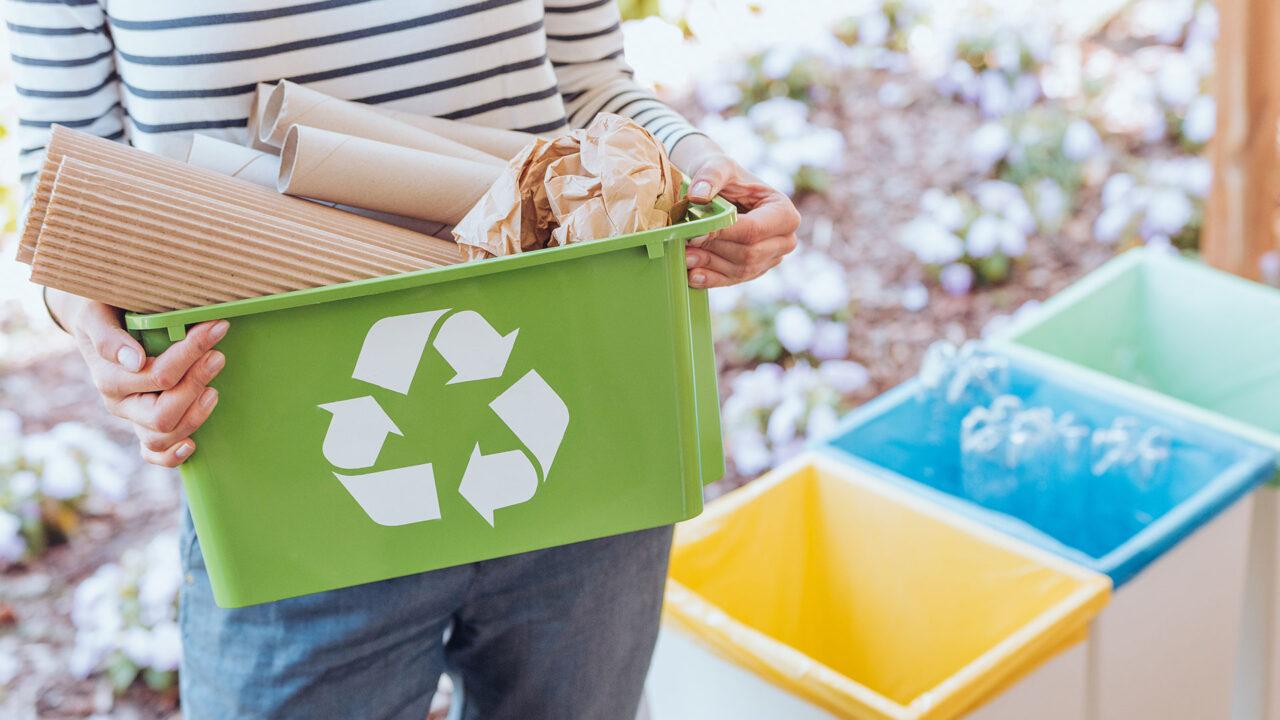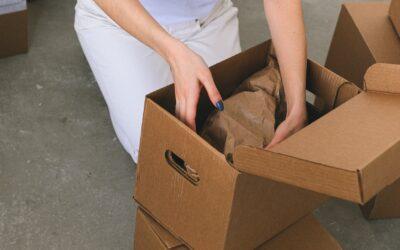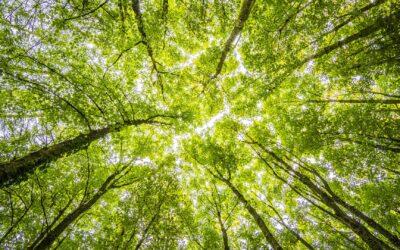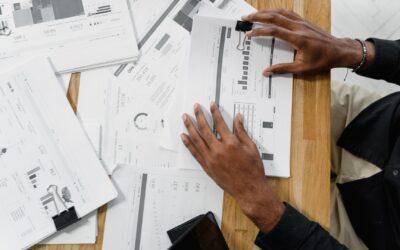
Rising consumerism, an increasing population – it is well-documented that humanity is generating more waste than the planet can handle. Fortunately, as we become more conscious of the need to protect our environment and live sustainably, many of us are also realising that responsibility begins at home. One really easy contribution we can all make is to recycle as much as we can.
Recycling used products is generally far more energy efficient than manufacturing them from scratch and can results in less pollution; it also means less waste going to landfill. Paper and cardboard are the most recycled materials in the world. In Australia, 87% of all paper and paperboard being recovered compared to e-waste recycling which sits at 9.6%. [1] In Australia, the proportion of waste paper recycled increased from 28% in 1990 to 85% in 2016, while the proportion of paper disposed in landfill has declined since the mid-2000s [2] This is leading global best practice. That’s something every Aussie can be proud of.
Our country is also working towards the ‘2025 National Packaging Targets’ which is being supported by the Australian Packaging Covenant Organisation (APCO). Targets create a new sustainable pathway for the way we manage packaging in Australia. The four targets are:
- 100% of packaging will be reusable, recyclable or compostable by 2025
- 70% of plastic packaging being recycled or composted by 2025
- 50% of average recycled content included in packaging by 2025
- The phase out of problematic and unnecessary single-use plastic packaging by 2025. [4]
To maintain our paper recycling rate and to achieve the packaging targets, we all need to contribute in some way, but with so many of us not equipped with the right knowledge about what you can and can’t recycle can be a confusing path to navigate. Education is key – that’s where we come in! As consumers we truly want to feel like we’re citizens of the world, trouble is, we often don’t know where to start.
Do you know what can and can’t be recycled?
In a report by BeahviourWorks Australia and Monash University, they note that co-mingled recycling has taken place in Australia since the 1980s yet is characterised by a diversity of scheme characteristics across Australia which effectively means we have a varied public-private partnership approach to recycling, management and reporting. From council to council it changes what can be accepted depending on where you live.
The report goes on to say recycling contamination was occurring at approximately 15% in NSW in 2018 and yet contamination of 10% or less could make continued collection of NSW recyclable streams economically viable under the recently implemented Container Deposit Recycling (CDR) legislation[5].The other problem we have with contaminated recyclables is they have to be diverted back to landfill, attracting a levy based on weight.
In 2018-2019, 42,000 tonnes of paper and paperboard was not recyclable. Packaging sent to landfill resulted in $520 million in lost value and 2 million tonnes of CO2 emissions. This is equivalent to 47, 000 cars on the road. It’s clear that recycling helps to reduce greenhouse gas (GHG) emissions[6] yet it can be challenging to change behaviours and attitudes across the generations is quite diverse.
Even the groups in society who are more outwardly conscious of the environment and the impact of humans upon it, can struggle to do the right thing. Millennials, for example, love sustainability, favouring reusable products and supporting environmentally-friendly brands. In the 2021 Toluna and Two Sides report, it was revealed that 65% of the 18-24 cohort think brands, retailers and supermarkets are doing enough to introduce sustainable packaging yet only 40% say they would consider avoiding a retailer if they knew they were not actively trying to reduce their use of non-recyclable packaging.[7]
Could this be down to the fact there is still a lot of ambiguity (or perhaps lack of knowledge) around what can or cannot be recycled, along with the bewildering array of different recycling symbols on the back of packaging that seem to have the nation confused? Education is definitely highlighted as a key issue when it comes to recycling. And whose responsibility is it anyway? Many feel it’s the responsibility of the individual first and secondary the government/local councils.
To try to help take the confusion out of the equation, we’ve put together some guidance on what should and shouldn’t be going into your recycling bins at home. We’ll focus on our area of expertise, paper and card, but a good rule of thumb to follow for other recyclable materials, whether it be plastic, aluminium or other, is that they should be rinsed clean before putting them in your recycling bin. Check with your local council for full details as stipulations can differ based on whereabouts in the state you live.
The good news is that when it comes to paper and cardboard packaging, the rules are particularly simple – it mostly comes down to common sense.
Paper and paper-based packaging that can’t be recycled
In Australia, most LGAs (92%) provide infrastructure for kerbside collection of some or all types of paper and cardboard waste (see image at the end of this article). Municipal collections of paper and cardboard include a significant volume of material derived from small businesses as well as household material. Paper and cardboard make up the largest proportion (46 -57 %) by weight of a typical household recycling bin. [8]
When it comes to paper-based products, it is quicker to list what can’t be recycled rather than what can. The important thing to remember is only clean paper will be accepted by recycling centres.
Anything that is contaminated with food substances (think ice cream cartons or takeaway trays), grease, dirt or paint, cannot be recycled (for example, kids’ artwork –don’t worry, you aren’t the only one who doesn’t pin every ‘masterpiece’ on the fridge door). These should all be disposed of with general waste. Also remember to remove any plastic wrappings from magazines or junk mail that you receive before putting them in your recycling bin.
- Pizza boxes– although made of cardboard, which is typically recyclable, any greasy residue or cheesy remains make these boxes a recycling no-go. However, you can just recycle the lid if it’s free of contamination because to recycle half a box is better than none. Or you could even use it in your flower beds to deter weeds!
- Kitchen towels and tissues– it may be surprising to know how many people throw their used kitchen rolls, napkins or snotty tissues into the recycling bin! Hopefully, after making it this far, you will know that they can’t be recycled.
- Shredded paper– although some councils do collect shredded paper for recycling, many don’t. A great alternative to sending it to a landfill is to use it in your compost. Some councils will also let you put it in your garden waste bin. Some councils will collect it if it’s bundled in a paper bag.
- Gift wrap– although paper-based wrapping paper is recyclable, anything with glitter or other additives such as metallised gold and silver shapes should be discarded with general waste as it causes issues within the recycling process.
- Plastic or wax-coated paper items– unless you can peel off the coating, these are generally rejected by recycling centres.
It’s also helpful to consider that by adding something that’s contaminated with food waste to your recycling bin, you run the risk of compromising other items that come into contact with them, meaning it might all end up in the landfill instead.
Sources and References
2.Australia’s State of the Forests Report, 2018
3.Australian Packaging Covenant
4. BehaviourWorks Australia, 2020.
5.APCO, 2021.
6.Two Sides and Toluna, 2021
7.Australian Government Department of the Environment and Energy, 2018.


